This article is part of a series of stories written by the young people who took part at our seminar “A call for peace for all”. They include real life stories of people who left their countries and/or information about migration in one of the European countries where MIJARC Europe has members. All those whose names or any other identification data appear in the articles have given their written consent for making this information public.
 In the context of the topic chosen for this year by our member movements – peace – we have launched an online campaign of peace messages and quotes under the #nevertakepeaceforgranted slogan. This campaign is part of our work plan which also includes two international activities and a travelling exhibition on the topic of peace. The first international activity of our work plan was preceeded by a preparatory phase during which our members had to interview/discuss with at least two people who had left their countries and are now know as “migrants”, “refugees” or “asylum seekers”. To our members they are just people, as are those living next to us. They have emotional and unusual stories, they live in different conditions but as our participants discovered they have not forgoten to be kind, tolerant, open and to forgive.
In the context of the topic chosen for this year by our member movements – peace – we have launched an online campaign of peace messages and quotes under the #nevertakepeaceforgranted slogan. This campaign is part of our work plan which also includes two international activities and a travelling exhibition on the topic of peace. The first international activity of our work plan was preceeded by a preparatory phase during which our members had to interview/discuss with at least two people who had left their countries and are now know as “migrants”, “refugees” or “asylum seekers”. To our members they are just people, as are those living next to us. They have emotional and unusual stories, they live in different conditions but as our participants discovered they have not forgoten to be kind, tolerant, open and to forgive.
Here we bring you the article written by the participants from Italy. The Italian version of the article can be found below.
Article written by Steven Gheno
Immigration in Italy
From 2014 to 2017 every year more than one hundred thousand migrants have landed in Italy; in the first five months of 2018 only 13 thousand have arrived. Analysts attribute the drastic decline to agreements signed by the outgoing Minister of Interior Marco Minniti with armed militias in Libya, which in recent months have pledged to block the departures of the boats, and to the strengthening of the Libyan Coast Guard, ie substantially other armed groups, brought forward by the Italian and European authorities.
Between 2014 and 2017, ie in the four years in which the flow from North Africa was more active, about 623 thousand people arrived by sea in Italy. These numbers have never been supported recently by any European country, excluding Greece
Between 2014 and 2015, however, few of the migrants arriving in Italy by sea stopped here: often they had relatives elsewhere in Europe or they felt more comfortable in a country where they were able to speak at least one language, like France or United Kingdom. Theoretically, the Dublin regulation, the European Treaty that regulates asylum procedures, requires that each request for international protection be managed by the European country where the newcomer first set foot. Since 2016 almost all European countries have increased controls at their borders and downloaded the burden of reception on Italy and Greece; and given that every migrant who arrives makes a request for international protection – otherwise he would be sent back, due to national laws – the two countries have dealt with tens of thousands of people.
The program studied in 2015 by the European Commission to transfer certain categories of asylum seekers from Italy and Greece to other EU countries did not work. It should have involved 160,000 asylum seekers who are almost sure of obtaining protection – and therefore Syrians, Eritreans and Iraqis – but since the Union has no legislative instruments to make a temporary instrument of this kind binding, most of the countries have cheated: three years Hungary, Slovakia, Denmark, the Czech Republic and Poland did not accept any asylum seeker from Italy. Estonia has welcomed 6, Bulgaria 10, Austria 43
According to UNHCR, the United Nations High Commissioner for Refugees, most of the migrants who land on the Italian coast come from Sub-Saharan African countries.
Immigrazione in Italia
Dal 2014 al 2017 ogni anno sono sbarcati in Italia più di centomila migranti; nei primi cinque mesi del 2018 ne sono arrivati solamente 13mila. Gli analisti attribuiscono il drastico calo agli accordi stretti dal ministro dell’Interno uscente Marco Minniti con le milizie armate in Libia, che nei mesi scorsi si sono impegnate a bloccare le partenze dei barconi, e al rafforzamento della Guardia Costiera libica, cioè sostanzialmente di altri gruppi armati,portato avanti dalle autorità italiane ed europee.
Fra il 2014 e il 2017, cioè nei quattro anni in cui è stato più attivo il flusso dal Nord Africa, sono arrivate via mare in Italia circa 623mila persone. Sono numeri mai sostenuti di recente da nessun paese europeo, esclusa la Grecia
Fra il 2014 e il 2015, comunque, pochi dei migranti che arrivavano in Italia via mare si fermavano qui: spesso avevano parenti altrove in Europa oppure si sentivano più a loro agio in un paese dove erano in grado di parlare almeno una lingua, come Francia o Regno Unito. Teoricamente il regolamento di Dublino, il trattato europeo che regola le procedure d’asilo, impone che ciascuna richiesta di protezione internazionale sia gestita dal paese europeo dove ha messo piede per primo il nuovo arrivato. Dal 2016 quasi tutti i paesi europei hanno aumentato i controlli alle proprie frontiere e scaricato l’onere dell’accoglienza su Italia e Grecia; e dato che ogni migrante che arriva fa richiesta di protezione internazionale – altrimenti sarebbe rispedito indietro, per le leggi nazionali – i due paesi si sono trovati a occuparsi di decine di migliaia di persone.
Il programma studiato nel 2015 dalla Commissione Europea per trasferire alcune categorie di richiedenti asilo da Italia e Grecia verso altri paesi dell’Unione non ha funzionato. Avrebbe dovuto riguardare 160mila richiedenti asilo quasi sicuri di ottenere protezione – e quindi siriani, eritrei e iracheni – ma poiché l’Unione non ha strumenti legislativi per rendere vincolante uno strumento temporaneo di questo tipo, gran parte dei paesi se n’è fregata: in tre anni Ungheria, Slovacchia, Danimarca, Repubblica Ceca e Polonia non hanno accolto nessun richiedente asilo dall’Italia. L’Estonia ne ha accolti 6, la Bulgaria 10, l’Austria 43.
Secondo l’Unhcr, l’Alto commissariato delle Nazioni Unite per i rifugiati, la maggior parte dei migranti che sbarcano sulle coste italiane proviene da paesi dell’Africa subsahariana
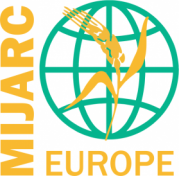
 An article written by:
An article written by: Between the 2nd and 5th July 2017, MIJARC Europe ran the international youth peace camp “We are the others”, part of the annual work plan on the topic of peace. The peace camp took place in Portugal and it was co-financed by Renovabis.
Between the 2nd and 5th July 2017, MIJARC Europe ran the international youth peace camp “We are the others”, part of the annual work plan on the topic of peace. The peace camp took place in Portugal and it was co-financed by Renovabis.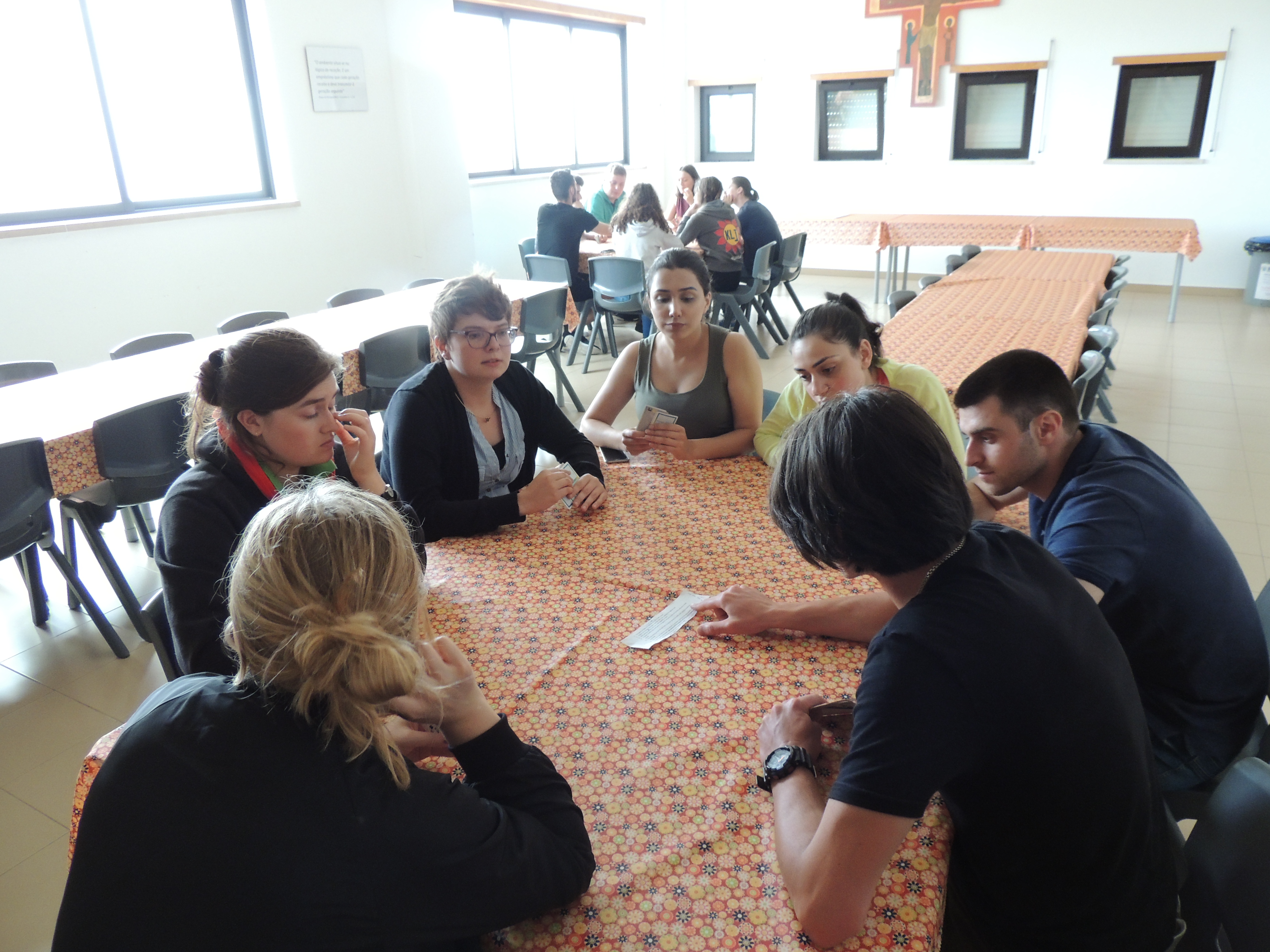 Even though Europe is still one of the most peaceful and prosperous parts of the world, there are some regions on the continent that have become unstable and more insecure and where acts of extremism and an increased fear towards the so-perceived “others” – migrants, refugees or asylum seekers and any minority group – have resulted in lower levels of tolerance, respect of human rights and freedom. In rural areas, conflict often appears because of competition for land and natural resources. In addition to this, poverty, lack of employment and opportunities of a better future can nurture resentment and cause fertile social contexts for intolerance and extremism. Also, for young people living in rural areas conflicts often have devastating consequences making them even more vulnerable.
Even though Europe is still one of the most peaceful and prosperous parts of the world, there are some regions on the continent that have become unstable and more insecure and where acts of extremism and an increased fear towards the so-perceived “others” – migrants, refugees or asylum seekers and any minority group – have resulted in lower levels of tolerance, respect of human rights and freedom. In rural areas, conflict often appears because of competition for land and natural resources. In addition to this, poverty, lack of employment and opportunities of a better future can nurture resentment and cause fertile social contexts for intolerance and extremism. Also, for young people living in rural areas conflicts often have devastating consequences making them even more vulnerable.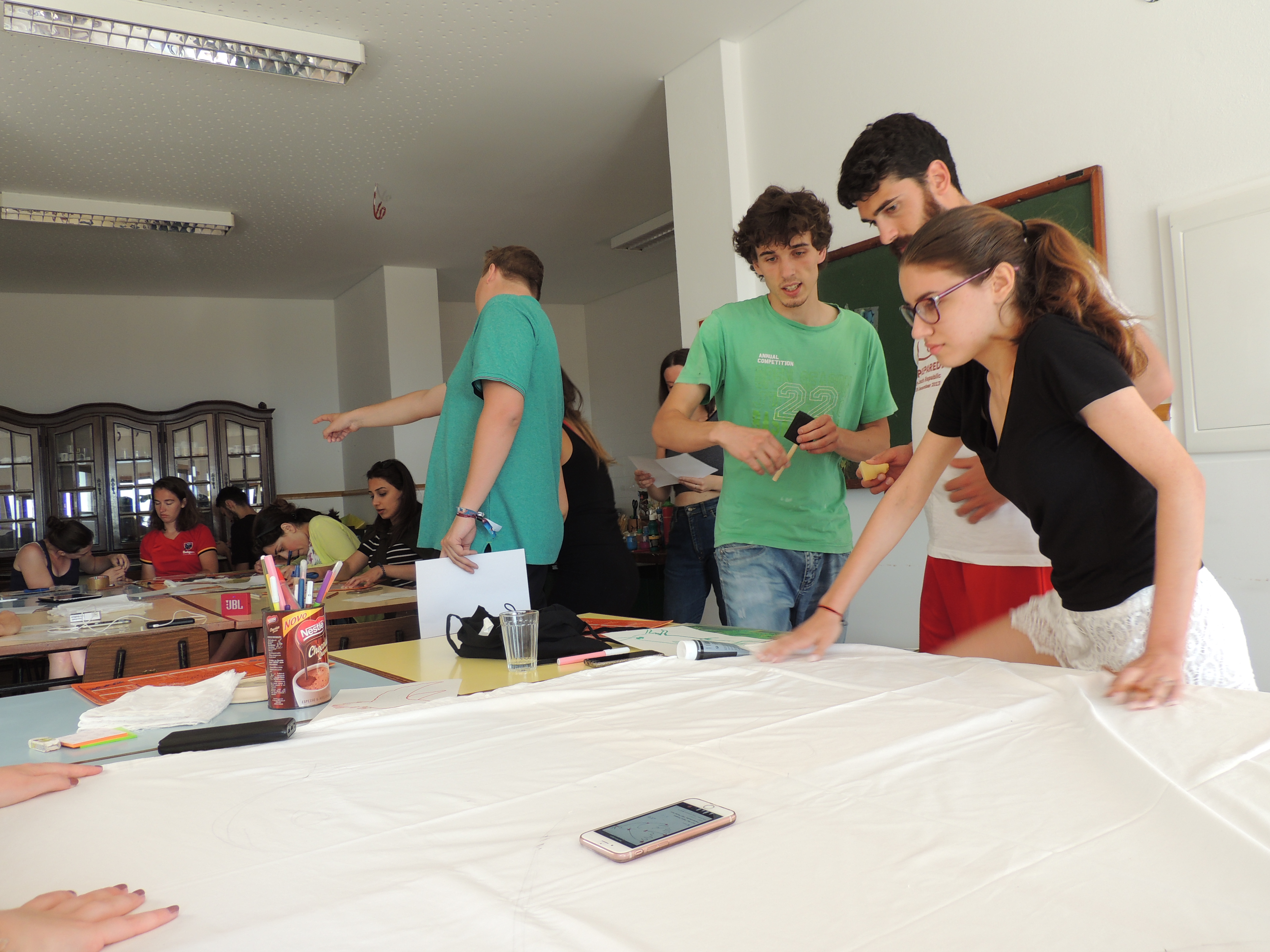 “We are the others” is a youth project that aims to prove everybody exactly what it says: that we all are responsible ourselves for all the situations we are part of. It sends the message that it is always in our power to generate change and play our positive role in our community, country, in Europe and around the world. The project aims to make the young people involved and those it reaches aware of the important and positive role they play in the maintenance and promotion of peace and security at all levels. Its objectives are to encourage tolerance, solidarity and intercultural dialogue exerted by young people as means of moving beyond the mistakes of the past and building the future, to help the rural young people participating in the project acquire intercultural competences in order to become more aware and active citizens for peace, countering radicalization and extremism, to promote a different narrative on the role of young people in conflict contexts depicting them as assets in peace building and peace maintaining and to create a tool for young people to spread their message of peace and social inclusion in their rural communities. It will do this by involving 30 young people from rural areas across Europe: Armenia, Belgium, Bulgaria, France, Germany, Italy, Malta, Portugal and Romania and migrants, refugees or asylum seekers located in Portugal. They all decided to join forces and invest in the development of their intercultural competences in order to be more prepared to work and live with vulnerable groups, to promote social inclusion in their communities and diffuse tensions that appear whenever we see those different from us as “the others”. Through the project, the young participants will create together a Position Paper and a travelling photo exhibition that will include portraits and stories of conflict and peace and photos that will suggest solutions for what young people can do today in order to build a safer and peaceful future.
“We are the others” is a youth project that aims to prove everybody exactly what it says: that we all are responsible ourselves for all the situations we are part of. It sends the message that it is always in our power to generate change and play our positive role in our community, country, in Europe and around the world. The project aims to make the young people involved and those it reaches aware of the important and positive role they play in the maintenance and promotion of peace and security at all levels. Its objectives are to encourage tolerance, solidarity and intercultural dialogue exerted by young people as means of moving beyond the mistakes of the past and building the future, to help the rural young people participating in the project acquire intercultural competences in order to become more aware and active citizens for peace, countering radicalization and extremism, to promote a different narrative on the role of young people in conflict contexts depicting them as assets in peace building and peace maintaining and to create a tool for young people to spread their message of peace and social inclusion in their rural communities. It will do this by involving 30 young people from rural areas across Europe: Armenia, Belgium, Bulgaria, France, Germany, Italy, Malta, Portugal and Romania and migrants, refugees or asylum seekers located in Portugal. They all decided to join forces and invest in the development of their intercultural competences in order to be more prepared to work and live with vulnerable groups, to promote social inclusion in their communities and diffuse tensions that appear whenever we see those different from us as “the others”. Through the project, the young participants will create together a Position Paper and a travelling photo exhibition that will include portraits and stories of conflict and peace and photos that will suggest solutions for what young people can do today in order to build a safer and peaceful future.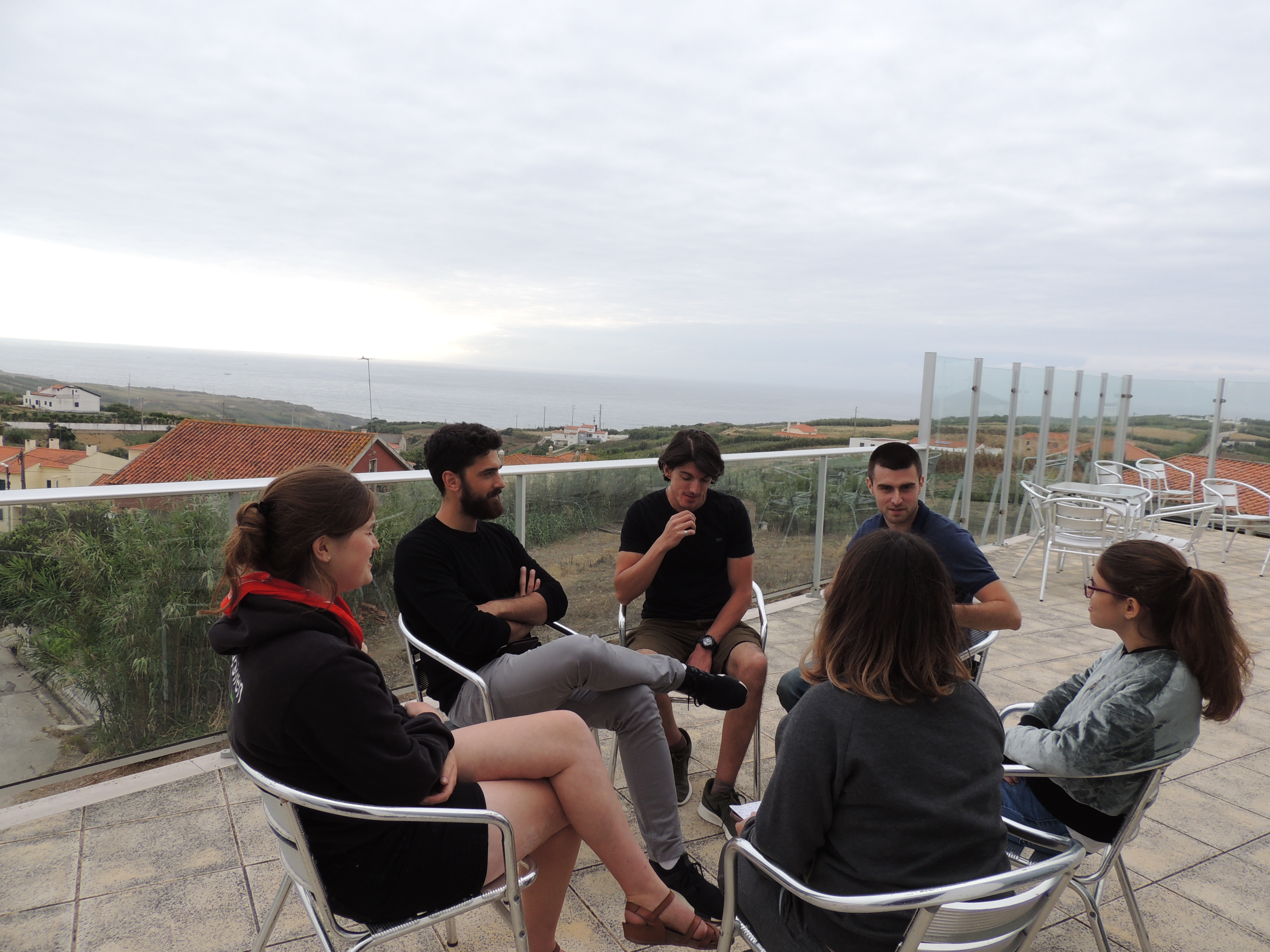 The exhibition will be accompanied by an educational booklet, containing activities designed by the participants that can be done with the exhibition. This exhibition will travel to eleven different countries, to meet with 500 young people and it will also be displayed at a peace festival where it will be seen by more than 5,000 young people from all over Europe.
The exhibition will be accompanied by an educational booklet, containing activities designed by the participants that can be done with the exhibition. This exhibition will travel to eleven different countries, to meet with 500 young people and it will also be displayed at a peace festival where it will be seen by more than 5,000 young people from all over Europe.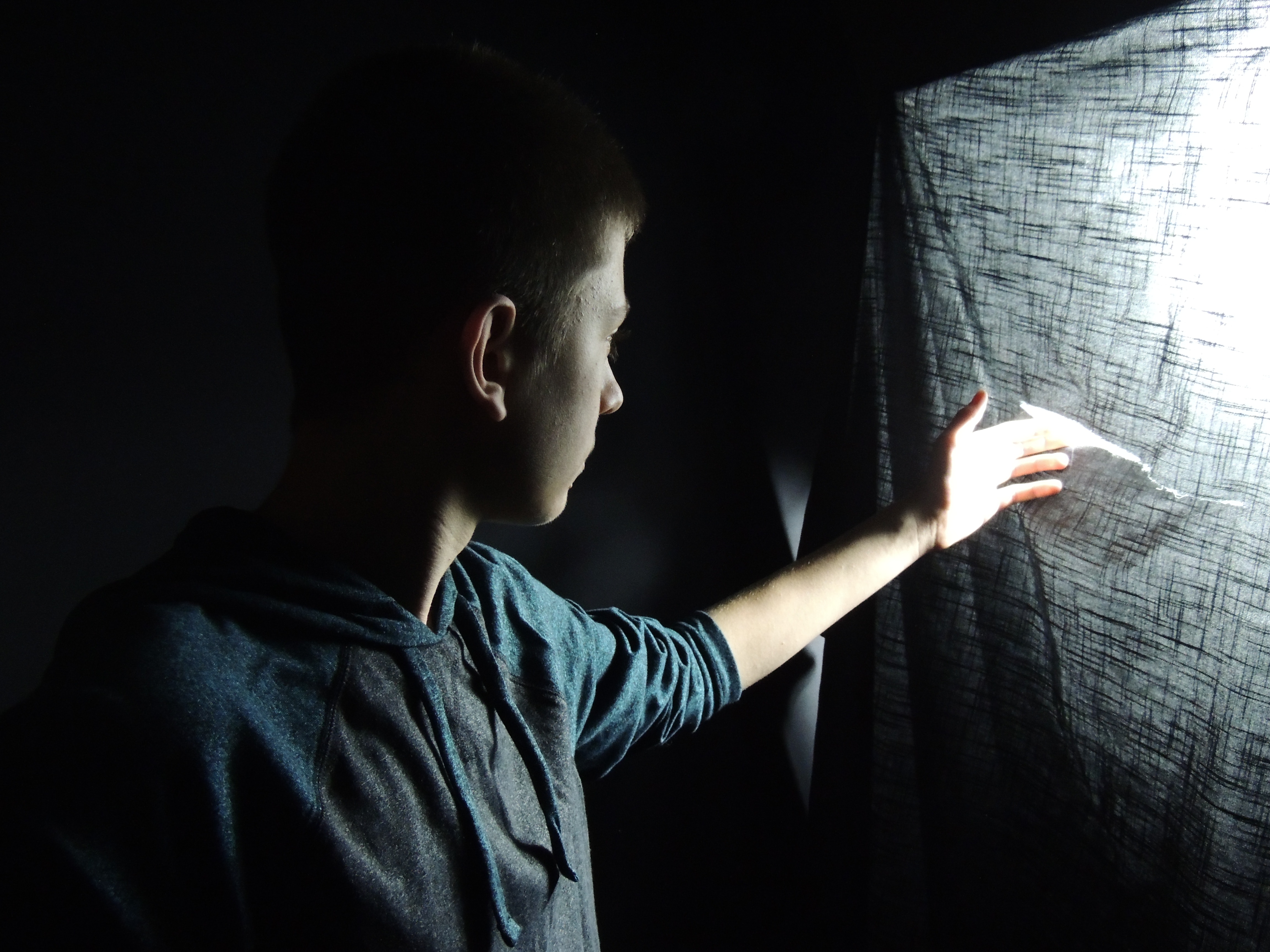
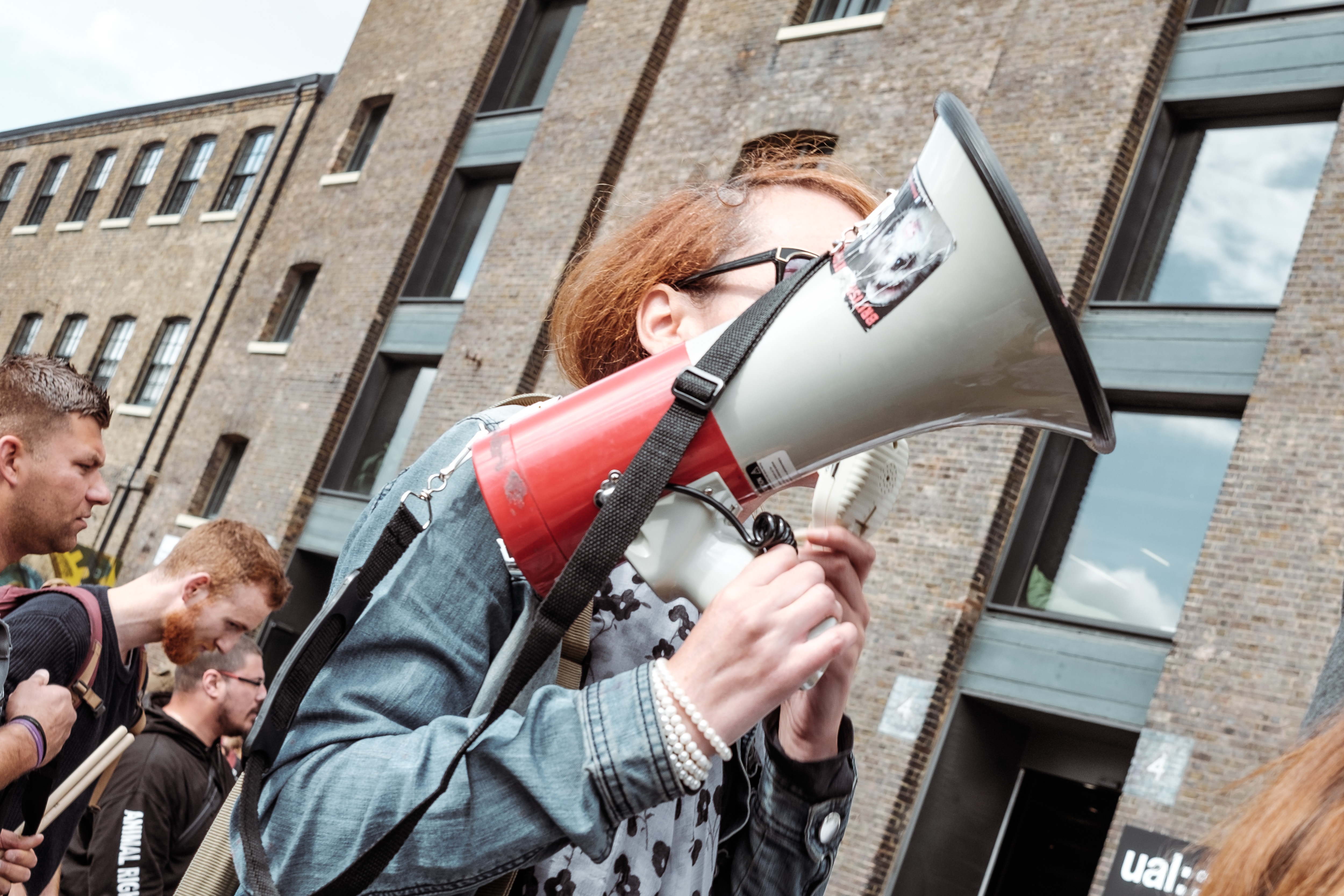
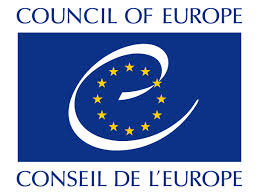
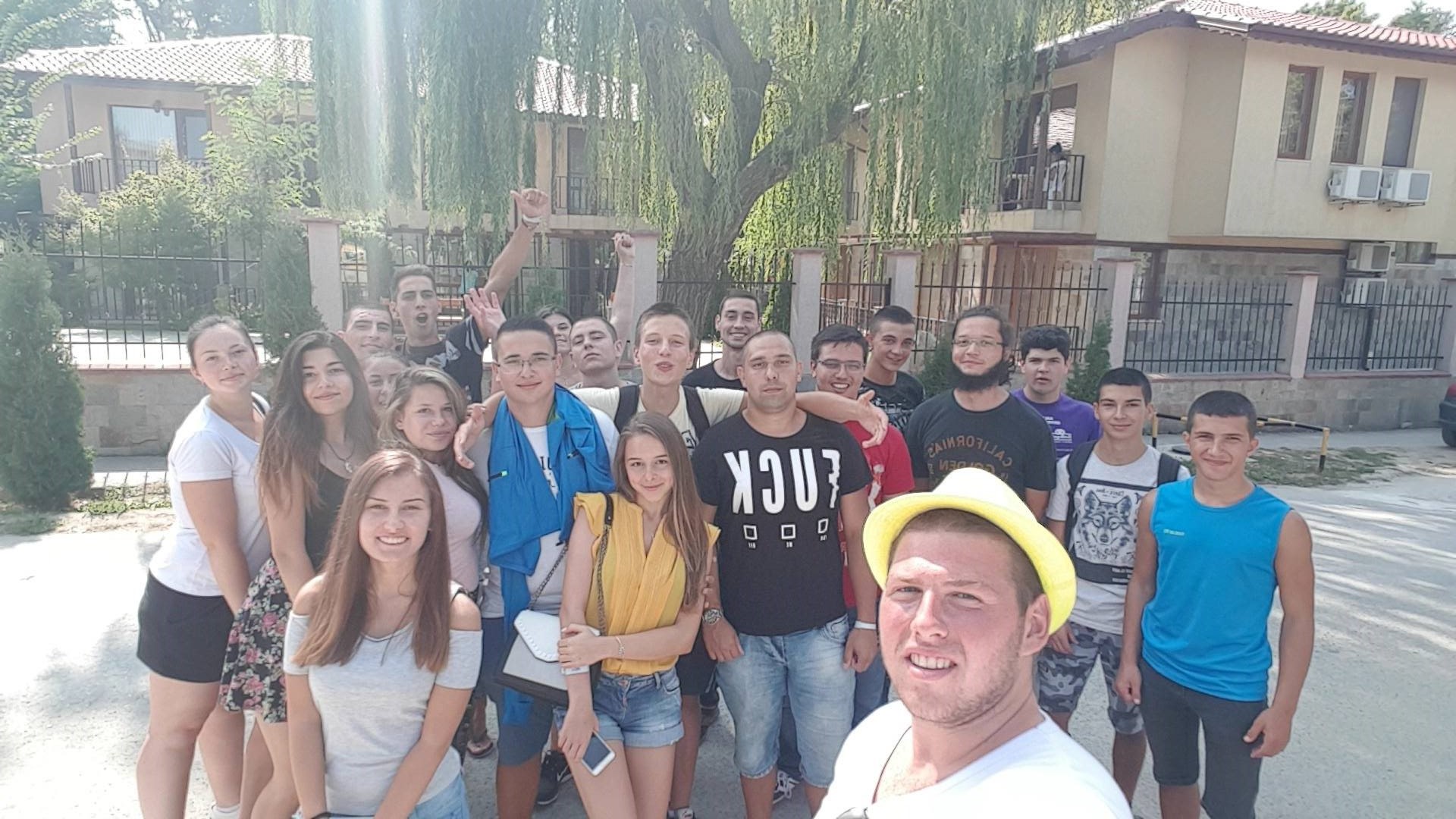
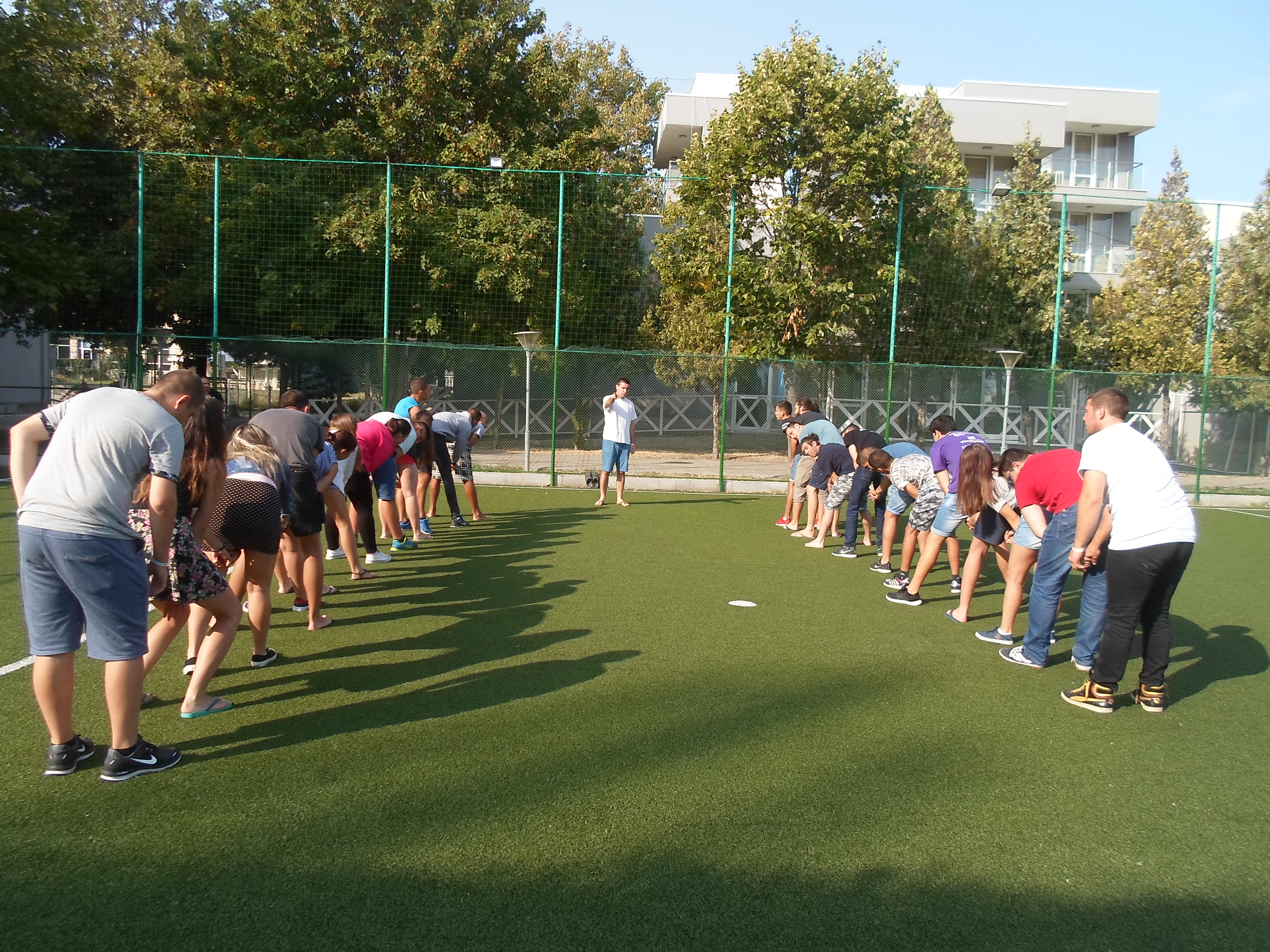 The main project activity was an one week collaboration event between the participants. They were accompanied by a coherently built team of trainers and experts, coming from YMDRAB and their partners in the project (Ardino Municipality, Botevgrad Municipality and The National Youth Forum of Bulgaria). Their collaborative work was entirely based on non-formal education, including: presentations, mixed working groups, role plays, group discussions, field visits and others.
The main project activity was an one week collaboration event between the participants. They were accompanied by a coherently built team of trainers and experts, coming from YMDRAB and their partners in the project (Ardino Municipality, Botevgrad Municipality and The National Youth Forum of Bulgaria). Their collaborative work was entirely based on non-formal education, including: presentations, mixed working groups, role plays, group discussions, field visits and others.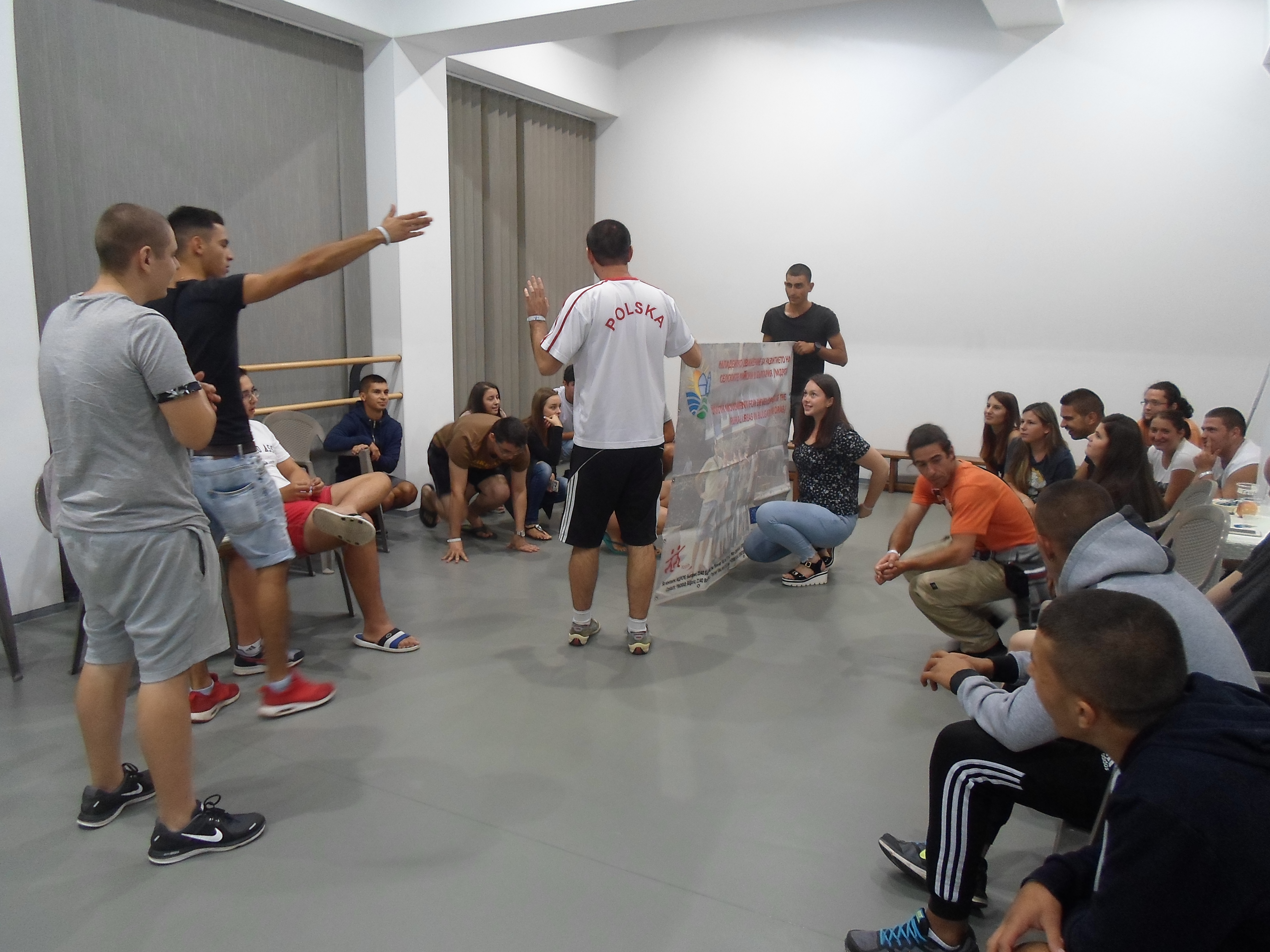 During the event the participants shared and analysed the realities of the Christian and Muslim youngsters in the Bulgarian rural areas and identified the challenges and opportunities to develop more cohesive multicultural and multi religious villages. They had the chance to break mutual stereotypes and prejudices and to develop awareness on concepts such as identity, culture, intercultural sensitivity and human rights (including gender equalities). The experts increased participants’ understanding of the local context (including institutions, authorities, relevant programmes, legislation, ect.), which can facilitate their access to social rights. And finally the participants were able to reflect and identify a set of actions for overcoming the mutual exclusion and for increasing the interaction between Christian and Muslim rural youngsters at local level.
During the event the participants shared and analysed the realities of the Christian and Muslim youngsters in the Bulgarian rural areas and identified the challenges and opportunities to develop more cohesive multicultural and multi religious villages. They had the chance to break mutual stereotypes and prejudices and to develop awareness on concepts such as identity, culture, intercultural sensitivity and human rights (including gender equalities). The experts increased participants’ understanding of the local context (including institutions, authorities, relevant programmes, legislation, ect.), which can facilitate their access to social rights. And finally the participants were able to reflect and identify a set of actions for overcoming the mutual exclusion and for increasing the interaction between Christian and Muslim rural youngsters at local level.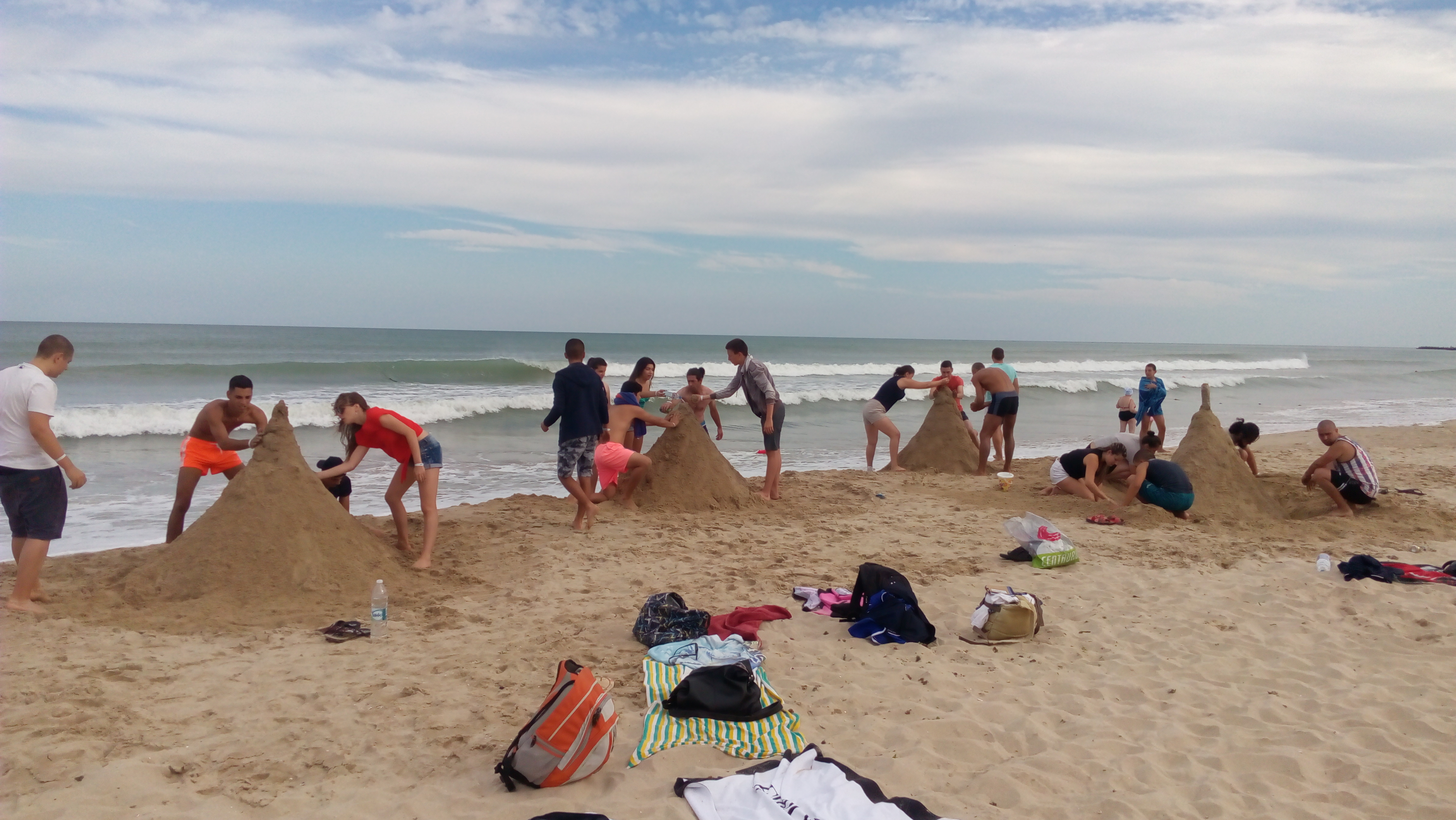 As a result of the collaborative work, at the end of the event a Position paper was developed outlining the results of the project. This document contains the common vision of participants how to encourage the social dialogue and interaction between Bulgarian Christian and Muslim rural youngsters. In parallel to that, two Action groups were established in the local communities of the participants, which will act as a moving force or implementation of effective follow-up activities.
As a result of the collaborative work, at the end of the event a Position paper was developed outlining the results of the project. This document contains the common vision of participants how to encourage the social dialogue and interaction between Bulgarian Christian and Muslim rural youngsters. In parallel to that, two Action groups were established in the local communities of the participants, which will act as a moving force or implementation of effective follow-up activities.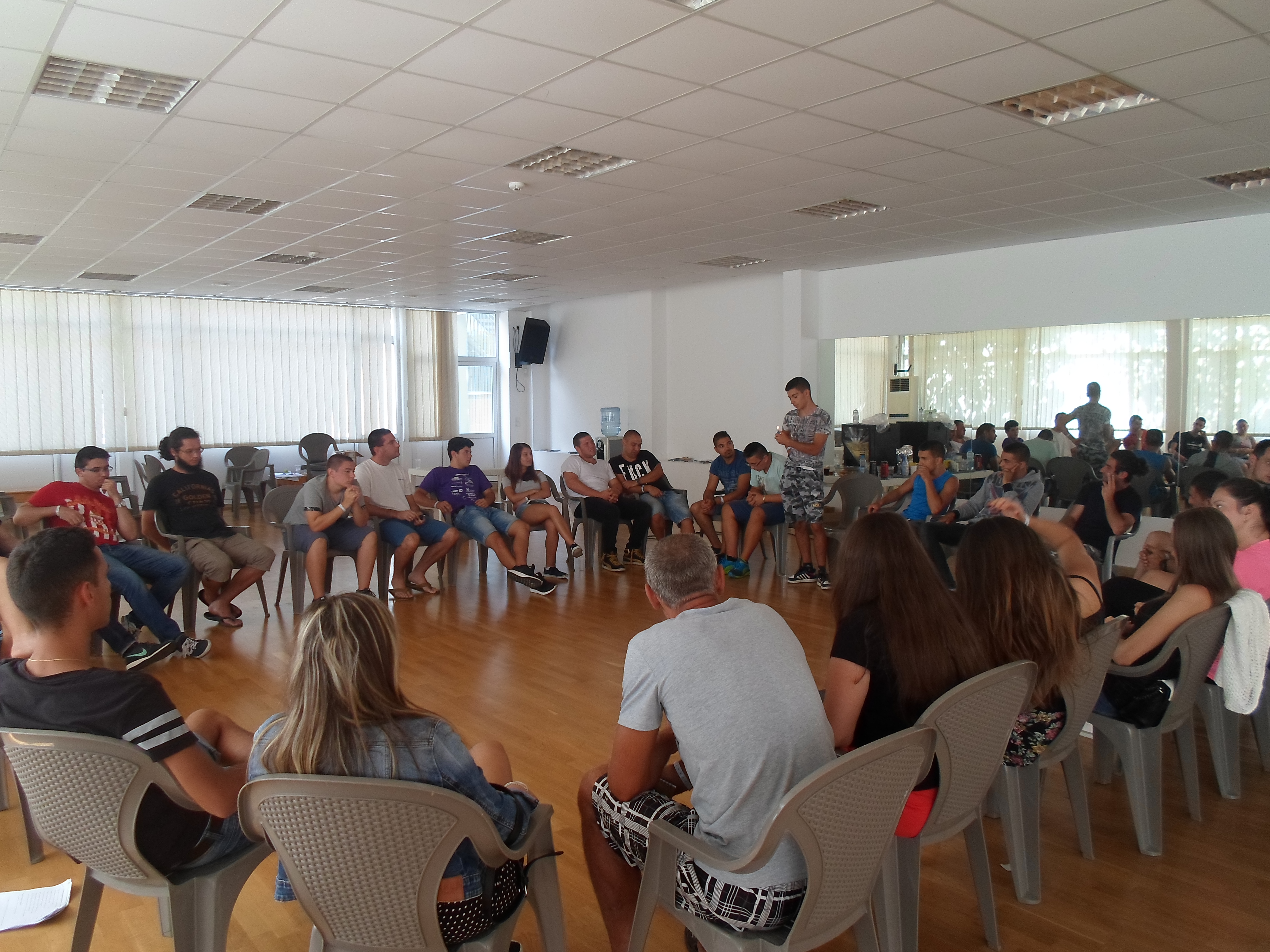 Besides the busy agenda, the participants found time for entertainment – there were various thematic evenings and funny activities on the beach. They also had a trip to Varna which is the European Youth Capital in 2017 and visited an outdoor open library created by local Christian and Muslim young volunteers. All of this inspired them for follow up actions and future cooperation.
Besides the busy agenda, the participants found time for entertainment – there were various thematic evenings and funny activities on the beach. They also had a trip to Varna which is the European Youth Capital in 2017 and visited an outdoor open library created by local Christian and Muslim young volunteers. All of this inspired them for follow up actions and future cooperation.